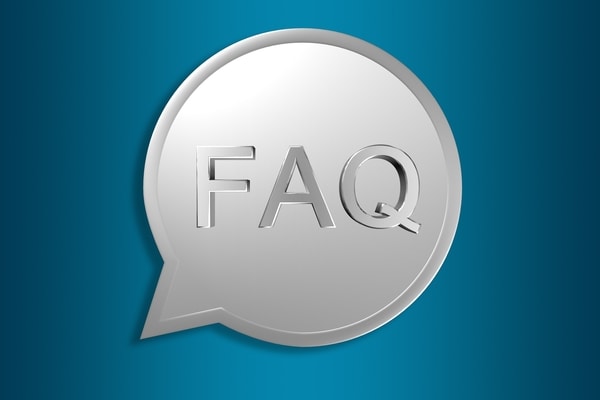What is Obstructive Sleep Apnoea (OSA)?
Obstructive Sleep Apnoea (OSA) is a common sleep disorder that affects millions of people worldwide. It occurs when the airway becomes partially or completely blocked during sleep, leading to interruptions in breathing and frequent awakenings throughout the night.
OSA can have significant consequences on a person’s overall health, including excessive daytime sleepiness, difficulty concentrating, and increased risk of cardiovascular problems. Fortunately, there are effective treatments available to manage and alleviate the symptoms of OSA.
Whether you or a loved one are seeking answers, understanding, or guidance on managing OSA, this page aims to provide a valuable resource to help you navigate this sleep disorder and take the necessary steps towards better sleep. Keep reading to learn more about obstructive sleep apnoea and the different non-surgical and surgical techniques to fix it.
About Obstructive Sleep Apnoea
Obstructive Sleep Apnoea (OSA) is the most common breathing and sleep disorder, although other types of sleep apnoea do exist. Episodic pauses in breathing characterize the disorder, and they’re usually a result of either a total or partial collapse of the airway.
OSA is a sleep-breathing disorder. People who have OSA develop episodic short pauses in breathing while they sleep, and it’s often accompanied by loud snoring and daytime sleepiness.
The good news? Obstructive sleep apnoea is treatable and Melbourne ENT offers the most advanced surgical and non-surgical techniques to treat snoring and sleep apnoea.
The cause of obstructive sleep apnoea is, as the name suggests, an airway obstruction. This can be due to either abnormal growth of the structures that form the airway, or hypermobility of certain parts that move and block the air passage when we sleep (like the tongue or soft palate).
Our airway is divided into an upper and a lower airway system. The upper airway consists of the nose, pharynx (throat), and part of the oral cavity. Air turbulence at any level of the upper airway, for any reason, can result in snoring and OSA.
The problem with obstructive sleep apnoea is it doesn’t end with snoring. The airway obstruction can lead to partial waking, which significantly lowers the quality of sleep.
OSA causes a drop in the oxygen level, which partially wakes the patient up. Repeated arousals may cause daytime sleepiness, irritability, moodiness, poor concentration and memory, and sometimes impotence.
Straining against partial suffocation may increase blood pressure, risking heart disease, hypertension or a stroke.
What Causes Obstructive Sleep Apnoea?
In children, obstructive sleep apnoea is commonly due to the enlargement of the tonsils and adenoids as a result of infection.
- The tonsils are small pieces of tissue located at the back of the mouth on both sides of the throat.
- The adenoid is a clump of tissue above the roof of the mouth.
In adults, hypermobility of the tongue, soft palate, and throat tissue is usually the cause of obstructive sleep apnoea. When your tongue and throat muscles relax during sleep, the soft tissue falls back and blocks the air from entering.
OSA Risk Factors
There are certain health conditions and lifestyle factors that increase your risk of developing OSA. Some of these include the following;
- Medical conditions causing nasal congestion (a swollen nasal passage with accumulated fluid and mucus)
- Excess growth due to the oversecretion of growth hormones
- Family history of sleep apnoea
- Diabetes
- Allergies
- Smoking
- Alcohol and drug abuse
- Sleeping pills or sedatives
- A narrow throat
- Macrognathia (large tongue)
- Hypothyroidism. This refers to low levels of the hormone thyroxine, which increases your chances of obesity.
Symptoms Of Obstructive Sleep Apnoea (OSA)
The symptoms of obstructive sleep apnoea may vary depending on the cause and severity of your condition. These symptoms can affect the quality of your sleep as well as other areas of your life, include:
- Loud snoring
- Moments of halted breathing during sleep
- Sudden awakening accompanied by choking
- Daytime sleepiness
- Feeling excessively tired during the day
- Loss of concentration during the day
- Restlessness, either awake or asleep
- Morning headaches
- Mouth breathing
- Hyperactivity during the day
- Irritability
When To See A Specialist about OSA
Knowing when to seek medical attention for obstructive sleep apnoea (OSA) is crucial for managing the condition and preventing potential complications. While not all snorers have OSA, it is important to consult an Ear, Nose, and Throat (ENT) specialist like Dr Stephen Kleid or Dr Simon Braham if certain symptoms are present, including;
- Loud and disruptive snoring:
- If your snoring is loud enough to disturb your sleep and the sleep of those around you, it may indicate the presence of OSA.
- Additionally, if your snoring intensifies when you sleep on your back and lessens when you sleep on your side, it is more likely to be associated with OSA.
- Excessive daytime sleepiness:
- Feeling excessively sleepy during the day, to the point where it impairs your ability to stay awake while driving or working, can be a sign of OSA.
- This level of daytime sleepiness requires immediate attention and evaluation.
- Awakening with gasping or choking:
- If you often wake up abruptly feeling as though you are gasping for air or choking, it could be a symptom of OSA.
- This indicates interrupted breathing during sleep and should be evaluated promptly.
Even if your snoring is not directly linked to OSA, our Surgeons can provide various treatment options to address snoring issues and improve the quality of sleep for both you and your partner. Seeking appropriate assessment and guidance from an ENT specialist is crucial for accurate diagnosis, personalized treatment, and potential prevention of related health risks.
Remember, prompt medical attention and proper management of OSA can help reduce the risk of complications, such as heart disease, hypertension, lung disease, metabolic disorders, and stroke.
What Are The Complications Of Obstructive Sleep Apnoea?
Diagnosing obstructive sleep apnoea early on is crucial because it can worsen other severe medical conditions. If you leave OSA untreated, it can lead to greater complications, including:
- Cardiovascular Diseases
- These are diseases of the heart and blood vessels.
- The low blood oxygen level caused by airway obstruction can cause an increase in blood pressure (hypertension) and heart rate.
- Hypertension is known to cause other cardiovascular diseases such as heart failure, heart attack, and stroke.
- Daytime Fatigue And Sleepiness
- If you are suffering from OSA, it’s very likely that you’re not getting enough sleep.
- Daytime sleepiness is one of the most common symptoms of sleep apnoea. It can be particularly dangerous when navigating daily activities like driving or jobs that involve heavy machinery.
- Increased Surgical Risks
- Medications like anaesthetics, analgesics, or sedatives can further relax your upper airway and worsen your obstructive sleep apnoea.
- It should be considered when undergoing major surgery, especially if you lie on your back for the procedure.
How Is Obstructive Sleep Apnoea Diagnosed?
The early diagnosis of obstructive sleep apnoea is essential for preventing further complications that may be life-threatening. Dr Kleid and Dr Braham work with a team of medical professionals capable of diagnosing your condition and choosing the most effective treatment option for you.
After assessing your medical history and symptoms, your surgeon will carry out a physical examination to visually inspect your airway to check for any abnormalities or growths. He might order a series of tests to diagnose obstructive sleep apnoea, these tests may include one or multiple of the following.
Sleep Studies (Polysomnography)
This is the most reliable test for diagnosing OSA. In polysomnography, you will be connected to a monitor while you sleep. The monitor measures your brain activity, the electrical activity of your heart, and your blood oxygen level. It also measures your chest, abdominal wall, arm, and leg muscle activity.
In polysomnography, the number of apneic episodes (total cessation of breathing) and hypopneic episodes (partial cessation of breathing) will be measured. If the sum of these episodes is greater than 30 per night, it is regarded as severe sleep apnoea.
Home Sleep Apnoea Testing
In some cases, your surgeon may provide you with an at-home sleep study kit to diagnose your disorder. It’s a simple procedure. This kit includes a breathing monitor to wear that tracks your breathing pattern, your oxygen levels, and your breathing effort.
How Is Obstructive Sleep Apnoea Treated?
The treatment of obstructive sleep apnoea (OSA) aims to relieve symptoms, improve sleep quality, and reduce associated health risks. The specific treatment approach depends on;
- The cause and severity of the condition
- Your age
- Your tolerance for procedures and medications
- Your preferred choice of treatment
Lifestyle Changes
Dr Kleid or Dr Braham may recommend lifestyle changes as an initial approach to prevent and treat your condition. Making certain lifestyle modifications can be effective in managing mild OSA and may help you avoid more invasive treatments, such as surgery or appliances.
They may advise you to abstain from certain risk factors that can worsen OSA, such as smoking and alcohol consumption. These substances can relax the muscles in your throat, contributing to airway obstruction during sleep. Additionally, they may suggest achieving a healthy weight if you are overweight or obese. Weight loss can help reduce the severity of OSA symptoms by decreasing the amount of excess tissue that may block the airway.
By implementing these lifestyle changes, you can improve the quality of your sleep and potentially alleviate the symptoms of OSA
Avoid all Sedatives if you have OSA
Sedation, whether from alcohol, sleeping tablets, Morphine etc, worsens snoring and OSA, by relaxing the muscles and interfering with the body’s ability to arouse from their low oxygen level while sleeping. Sedation can be dangerous in patients with OSA.
Conservative Therapy for OSA
Dr Kleid and Dr Braham suggest conservative therapy in cases of moderate to severe obstructive sleep apnoea that fails to respond to lifestyle changes alone. Non-surgical treatment of sleep apnoea and snoring include:
1. Continuous Positive Airway Pressure (CPAP)
This is a breathing machine that delivers continuous air pressure to your nose at night – just enough to keep your upper airway passages open and prevent obstructive sleep apnoea. The air is pumped by a machine and goes through a plastic tube to reach the mouth/nose piece. The pressurized pumped air overrides any possible resistance along the airway.
2. Oral Appliances
These oral devices are designed to keep your throat open or bring your lower jaw forward to relieve obstructive sleep apnoea and snoring. The devices prevent the tongue, upper jaw, or lower jaw from falling backwards once you sleep.
Dr Kleid and Dr Braham will recommend the appropriate oral appliance for you at your consultation.
3. Adaptive Servo Ventilation (ASV)
The ASV machine is similar, but more advanced, compared to a CPAP machine. The ASV device has a computer that studies the abnormalities in your breathing and adapts with just enough pressure to relieve your obstructive sleep apnoea. This advanced technology is not a fixed value, but rather it adjusts to the needs of your condition.
When your breathing problem ends, the ASV machine re-aligns to your regular breathing pattern.
Surgery for OSA
In some cases, surgical procedures may be considered to address anatomical abnormalities that contribute to airway obstruction. Surgical options can include uvulopalatopharyngoplasty (UPPP), tonsillectomy, adenoidectomy, nasal surgery, or jaw surgery. These procedures aim to increase the size of the airway or correct structural issues that contribute to OSA.
Surgical treatment for sleep apnoea is usually indicated when other non-surgical treatment options have failed.
Usually, non-surgical treatment of obstructive sleep apnoea is tried for at least 3 months. If your surgeon notices no improvement, he might recommend one of the following operations, depending on your specific condition:
1. Uvulopalatopharyngoplasty (UPPP)
This is the most commonly performed surgery to treat snoring and sleep apnoea syndrome. During this surgery, your surgeon will remove excess tissue in your throat to make your airway wider. Tissue removal may include your tonsils, uvula, and a part of your soft palate. The procedure is performed under general anesthesia. Dr Kleid now performs a modified UPPP Surgery.
2. Radiofrequency Ablation (RFA)
RFA involves using pulses of radiofrequency energy directed at the tissue, causing the cells to die, thereby reducing the tissue size. This is a minimally invasive procedure that clears up the airway from possible obstruction.
3. Palatoplasty with lateral tonsillopexy
Your ENT surgeon reshapes your soft palate (roof of the mouth) and shrinks your tonsils.
4. Maxillomandibular advancement (MMA)
Your ENT Surgeon will advance the jaw and fix it in a forward position to stop it from falling backwards and causing airway obstruction during sleep. This is a common surgical treatment for apnoea and snoring.
5. Genioglossus advancement
This surgery for sleep apnoea is when your ENT surgeon advances your tongue to prevent it from falling backwards during sleep.
6. Midline glossectomy and lingualplasty
In this surgical therapy for sleep apnoea, your ENT Surgeon removes some bulk from the middle of your tongue to shrink it and reshape it.
7. Nose Surgery
If the obstruction causing your sleep apnoea is at the level of your nostrils, then nose reshaping surgery may help. This might include rhinoplasty, septoplasty, polyp removal, Alarplasty, and other surgical nose procedures.
The choice of surgery to treat obstructive sleep apnoea depends on the specific cause of your condition, your anatomy, age, and many other factors.
Your Melbourne ENT Surgeon will explain your choices to you after a full evaluation and tests.
Recovery After OSA Surgery
Surgical treatment of obstructive sleep apnoea is usually reserved for more advanced or severe cases. That being said, recovering from surgery may involve some discomfort:
- Pain during swallowing and speaking
- Bleeding (not a frequent occurrence)
- Voice changes
To keep you as comfortable as possible, your surgeon will suggest some precautions to manage your discomfort:
- Take the prescribed pain medication as needed
- Drink plenty of fluids
- Avoid heavy or excessive activities
Minor side effects of surgery, like those above, usually resolve after one to two weeks. After that, you are able to return to your regular schedule.
Outlook for Patients
Obstructive sleep apnoea has an overall favorable outlook as long as you get it diagnosed and treated as early as possible. The dangers of untreated sleep apnoea can be detrimental to your health.
If you are concerned that you might have obstructive sleep apnoea, set up an appointment to see our experienced Melbourne ENT surgeons.
Obstructive Sleep Apnoea FAQs – OSA FAQs

What is the best position to sleep in with sleep apnoea?
- The preferred sleeping position when you have obstructive sleep apnoea is lying on your right side. This can help reduce snoring and encourage better airflow.
How do I know if I have sleep apnoea if I live alone?
- Being overweight or obese is a significant risk factor for obstructive sleep apnoea. To reduce sleep apnoea symptoms, losing about 10-15 % of your bodyweight may be effective.
- This is highly variable and depends on your specific condition. In some people, weight loss alone might not be enough to completely cure sleep apnoea and snoring (although it might reduce it). In such cases, surgery, CPAP, and oral appliances are the only way to go.
What if I can’t sleep during a sleep study?
- If you can’t sleep during your sleep study despite trying, you can take a light over-the-counter sleeping pill. This helps your body relax and puts it into a sleeping mood without affecting the results of the polysomnography.
When should I see a sleep specialist?
- If you experience persistent sleep issues, such as snoring, daytime sleepiness, and fatigue, that persist for an extended period, it is recommended to consult a sleep medical professional. They will evaluate the quality of your sleep and diagnose any sleep and breathing disorders like obstructive sleep apnoea.
What is the common side effect of CPAP?
- CPAP can be uncomfortable for many people. This leads to the inability to initiate sleep when needed. This is the only known side effect of CPAP. You should know, however, that most people quickly get used to CPAP and can easily incorporate it into their sleeping routines
Further Reading
- Read about Melbourne ENT’s Snoring – Sleep Apnoea
- Read about Melbourne ENT’s Sleep Disturbance Melbourne
- Read about Melbourne ENT’s Snoring Surgery Melbourne
- Read about Melbourne ENT’s Breathing Problems for Adults Melbourne





